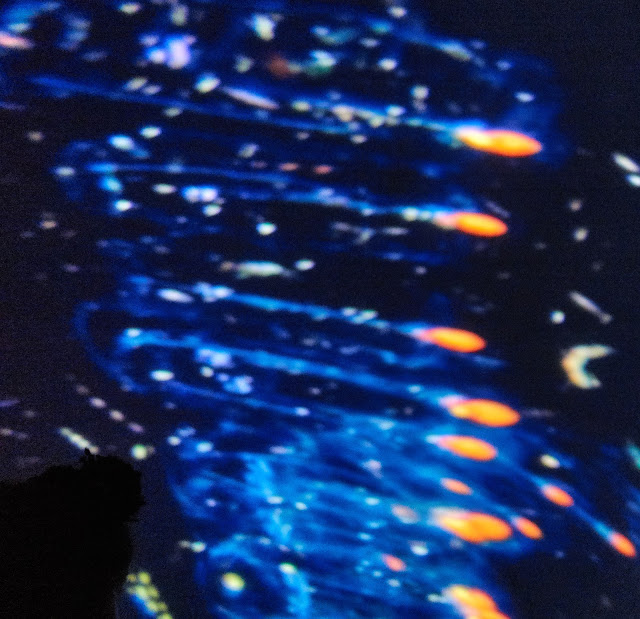Recently I've discovered the joys of Museum Lates. These are events which, as the name suggestions, museums and galleries across London have special late openings. But not all Lates are the same, and the
Londonist web site has identified two categories:
- Museums and art galleries that open late
- Museums and art galleries that have events hosted in their spaces in the evening
I'd been to the National Gallery late before, and that had been an example of the first category, but the Royal Academy [of arts] was firmly in the second category, described by the Londonist to be grand affairs with "DJs, cocktails, bizarre performances and so much more" that sell out quickly.
I wanted to go to the Oceania exhibition anyhow so when the email for the "
RA Lates: Cosmic Ocean" came round thought why not? and it turned out to be a lot of fun. Indeed, at one point I thought I might give the actual exhibition a miss and just do the event.
First up were some talks, including "A guide to ocean sailing" by Oliver Beardon of
Sail Britain. He touched on navigation techniques including those used by the Polynesians such as this stick chart:
One of the focuses of Sail Britain is to highlight the danger of plastics to our ocean, and there were some slides on this include the famous ocean
gyres:
I had a brief chat with him afterwards and mentioned my experience from Svalbard of
finding plastic on every beach and suggested he read
Tristan's book on water.
The Polynesian navigation theme continued with a pop-up (or rather blow up, given it was inflatable) planetarium that showed the southern skies and how they were used to navigate. For example, this shows how to find south:
Around the horizon you can see the 32 directions that the Polynesians used - which is just like the 32
points of the compass used in the west. As they say, great minds thing alike.
The event was described as Cosmic Ocean so as well as a inflatable planetarium there was a similar hemisphere for a video of life in the ocean:
This video was more artistic, though less informative. It had a weird 180 degree field of view and there was no sense of scale. Many of the creatures looked like they were from the deep, dark depths where here be monsters:
Some of the best bits were abstracts, like the bioluminescence creatures flickering across the globe:
It certainly made the sky => stars and sea => bioluminescence connection very vividly.
There was lots else to see, with bars selling cocktails all over the place, rooms full of plot plants like a tropical jungle, courtyard with food stands and music complete with Hawaii dancers, London Hula!!
The audience looked similar to the dancers as there'd been a strong dress-to-impress message: "cosmic constellations, stars and moons, or alternatively opt for a deep sea creature". So some came as mermaids, many had glitter on their face or fair lights in their hair. I was a bit more modest but had dug out an old space themed t-shirt.
Along with the luau in the RA Cafe there was also a talk elsewhere about its "secret" history and why it is both authentic but also not-authentic (I think; must admit only got the tail end of this talk as was waiting for the Sail Britain one).
I missed some bits, like there was what sounded like a fascinating video on Polynesian voyaging traditions called Star Travel -
see the trailer for it here. Unfortunately it was 50 minutes long and I didn't have that much time. I also skipped the coral sketching class and a site-specific art-film called "Exotic Savage: The Decolonisation". I was tempted by the DJ who seemed rather good but suspect it was aimed at a younger audience - i.e. those who weren't thinking it might be time to head off home.
It was all a lot of fun, plus there was the exhibition...


















































